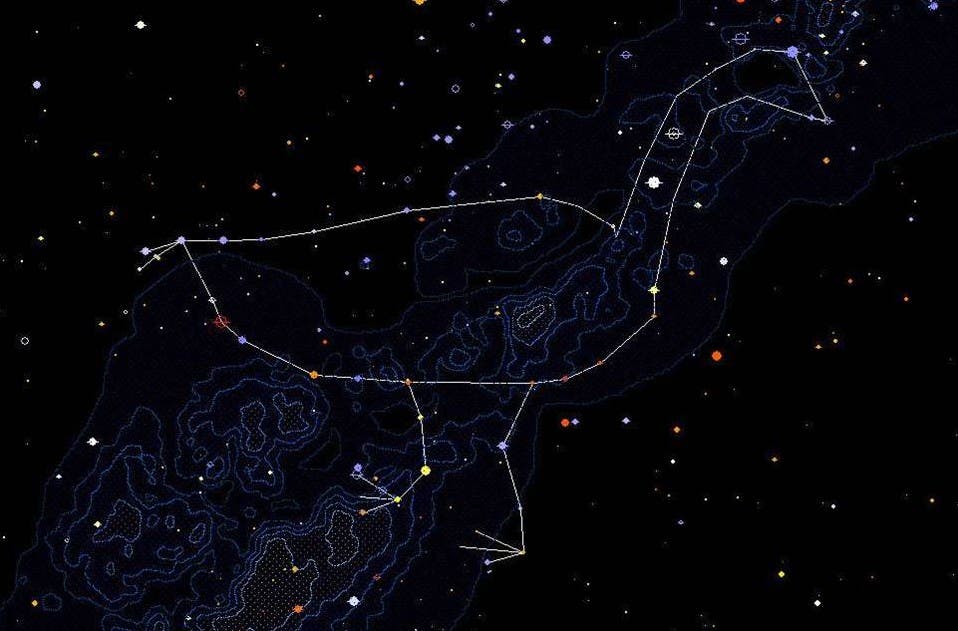We often regard the invention of astronomy from a Greek perspective — after all, most of the official constellations and planets are named after Greek mythology. The names are connected to epic stories that permeated ancient people’s imagination, making it easier to pass the information to a younger generation. However, astronomy was not exclusive to western philosophy– other people used astronomy in their lives as well, and they had their own, different systems.
Archeoastronomy focuses on the way ancient civilizations used astronomy, either for religious purposes or scientific observations. It is known from archeoastronomy that Mesoamerican cultures used their architecture as a form of measuring time. Their legacy is studied by ethnoastronomy.

We know a few examples of different astronomical classifications. The Aboriginal culture has a constellation called Emu, the Australian ostrich, between the Southern Cross and Scorpius. Similarly, in African Tswana and Venda traditions, the Southern Cross is a group of giraffes.
Brazilian indigenous groups also have their own astronomical system. Most of the information we now know can be traced to the moment when the Europeans started interacting with these indigenous people, also through more careful observation from explorers who visited the Americas as part of their academic lives. For most of the outsiders, the indigenous culture was seen as inferior, limited, and they formed a narrative in order to fit in the eurocentric view:
“With the true God, who created heaven and earth, they don’t care. They believe, with a long tradition, that heaven and earth have always existed. In fact, they know nothing about the beginning of the world, they just narrate that there was once a vastness of water in which all their ancestors drowned. Only a few there escaped on a boat and others on tall trees. I think it must have been the flood.” (Hans Staden between 1547 and 1548)
However, although Europeans tried to discard indigenous knowledge, an important part of it survives to this day.
Tupis, Tupinambá, Guarani
Tupi is the term used to describe the people and the family of languages that includes 41 native languages spoken between Brazil, Argentina, Peru, Bolivia, Paraguay, and Uruguay. The Tupinambá people, one of the Tupi ethnic groups that lived in the Atlantic Forest in Brazil, speak a Tupi language, so researchers chose to name the people Tupinambá, and Tupi their language.
The Guarani, also living in the same countries listed above, are distinguished from the Tupinambá because they don’t speak any of the 41 languages, they speak the Guarani language. Historians believe the Guarani descended from the Tupinambá and a series of migrations changed their language over time.

In Brazil alone, there are known 220 indigenous ethnicities. The most populous group is the Guarani, approximately 46,000 people. Anthropologists estimate that there are at least 185 isolated groups between Venezuela, Brazil, Peru, Bolívia, and Ecuador. Of these, many have their own way of looking at constellations.
Time
Despite the many disturbing events that took place when Europeans started colonizing Brazil, records of local astronomy still exist, and they’re a good source of information for researchers. These written records provide the ‘Rosetta stone’’ that enables astronomers to translate the constellations named by the natives to the stars as we know them today.
The Tupinambá people, one of the Tupi ethnic groups that lived in the Atlantic Forest in Brazil, used to mark time according to moon phases, proving they used astronomy in their lives. The Europeans learned that as they asked the age of native Brazilians they met, the replies were large numbers, and the foreigners soon connected it to a different system of units.
Tupinambás understood the tides and their connection to the lunar phases, even without a gravitational theory. In 1612, the Franciscan missionary Claude d’Abbeville wrote that “the Tupinambá attribute the ebb and flow of the sea to the Moon and distinguish the two high tides very well that occur at the full moon and the new moon or a few days later”. It was only in 1632 that Galileu Galileiwrote in his book ‘Dialogue Concerning the Two Chief World Systems’ that the mechanism which causes the tides are Earth’s rotation and translation. It took 75 years until Isaac Newton gave the correct explanation but still lagging years behind the Tupinambás.
The seasons
Thanks to Professor Germano Afonso’s work, we learned more about Tupi astronomy in recent years. Afonso spent months among the Tupi, collecting all the information he could. He discovered that among the Tupi, the common celestial bodies used as a calendar were the Moon, the Sun, Pleiads, the galactic center, Orion and Scorpius’ region, and the Southern Cross. Their gnomon, the solar clock, called the Cuaracyraangaba, is a vertical stone pointing at the zenith, similar to many other cultures around the globe. According to local myth, the Nhanderu god created four other main gods who helped create the world. Nhanderu represents the zenith and the four gods are the cardinal points.

For the Tupi, there are only two seasons: the new weather (spring and summer) and the old weather (autumn and winter) — which makes sense for a good part of the Brazilian territory in terms of climate, the four seasons system work better for mid-latitudes. Thanks to the gnomon, they knew the day on which season started depending on the Sun’s directions. This is simple, in the Southern Hemisphere, the Sun rises and sets closer to the South in the summer and closer to the north in winter.
Constellations
Different from the zodiac constellations, constellations were not only patterns between stars for the indigenous people,, but also the light and dark marks in the Milky Way. Nhanderu is the best example for the dark constellations, it is the dark region near Cygnus, a northern constellation in the Milky Way plane, deriving its name from the Greek word for swan. Both the Large and Small Magellanic clouds (dwarf galaxy companions to the Milky Way) are constellations as well, both named after South American animals: Tapir’s fountain and Skunk Pig’s fountain respectively.

Seasonally, the Pleiads were another tool to mark the year, they knew they would appear in a wet season and disappear in the dryer one.

The beginning of summer is based on the constellation of the Old Man marking the start of the rainy season in the North of Brazil. It is the image of a disabled person made out of some of Orion and Taurus stars. The head is in the Hyades star cluster, above the head Pleiads, Orion’s belt is in the left leg, while a shorter leg ends with Betelgeuse. He also holds a stick with his right hand to help to stand. In their mythology, the Old Man lost his right leg after he was murdered by his wife who was younger and interested in the man’s younger brother. The gods felt sorry for him and took him to the sky in the form of a constellation.

It’s evident that looking towards the sky is part of human nature. For Europeans, Native Americans, Aborigines, Africans, and many other cultures around the world, this was clearly a common pursuit of knowledge. The differences are the myths and shapes used alongside these observations, but the guiding principles were the same.For millennia, the sky was the best calendar we had, and it was a way to prepare for the weather ahead. Perhaps we should add a few different gods to name new planets and stars observed.


